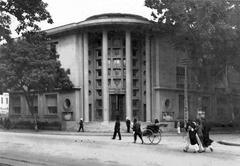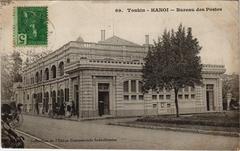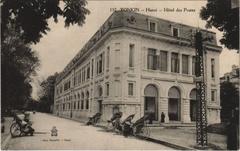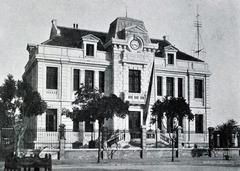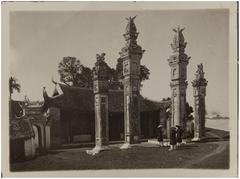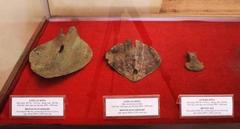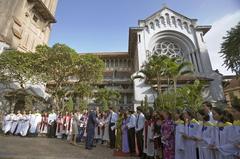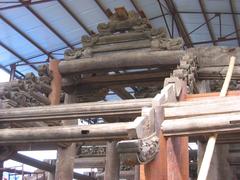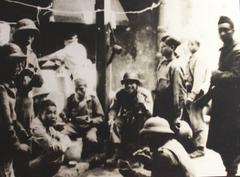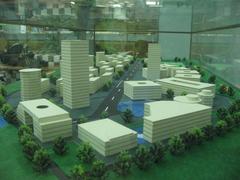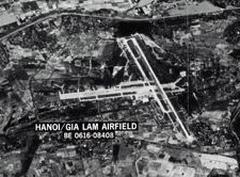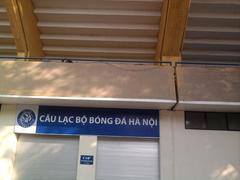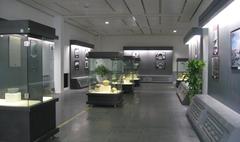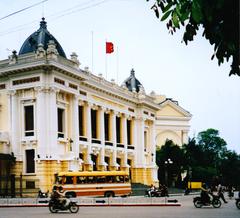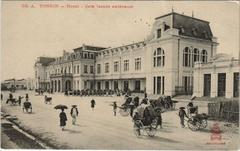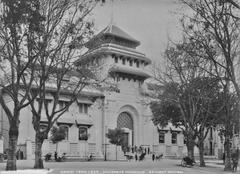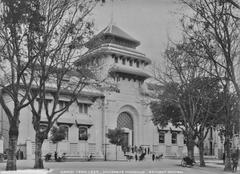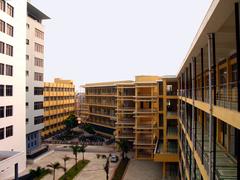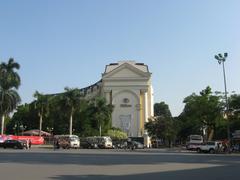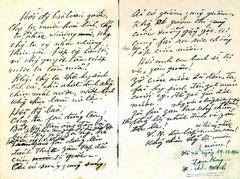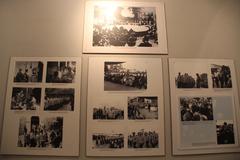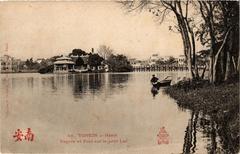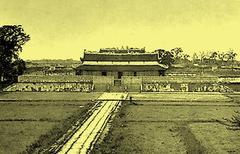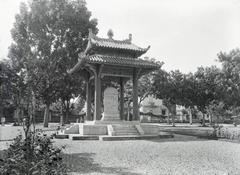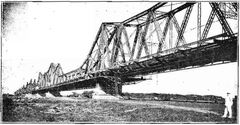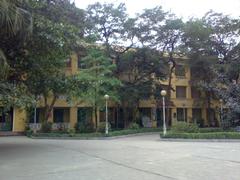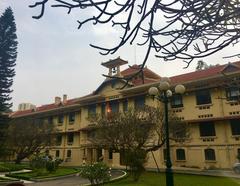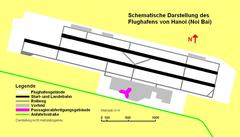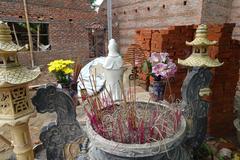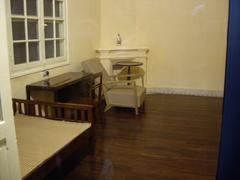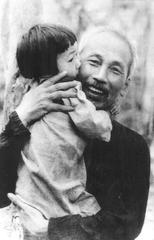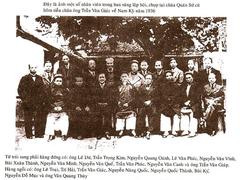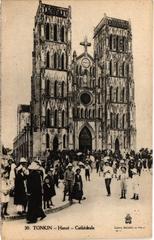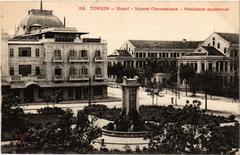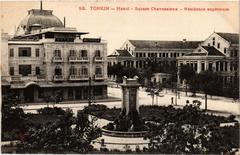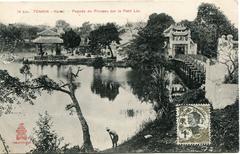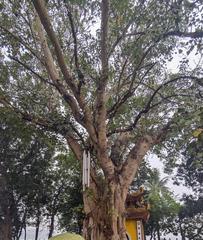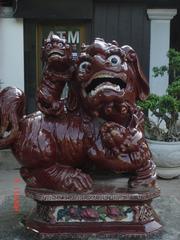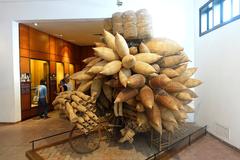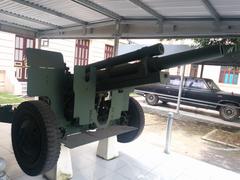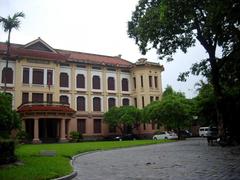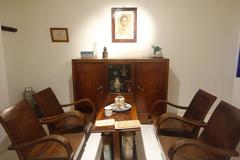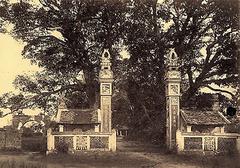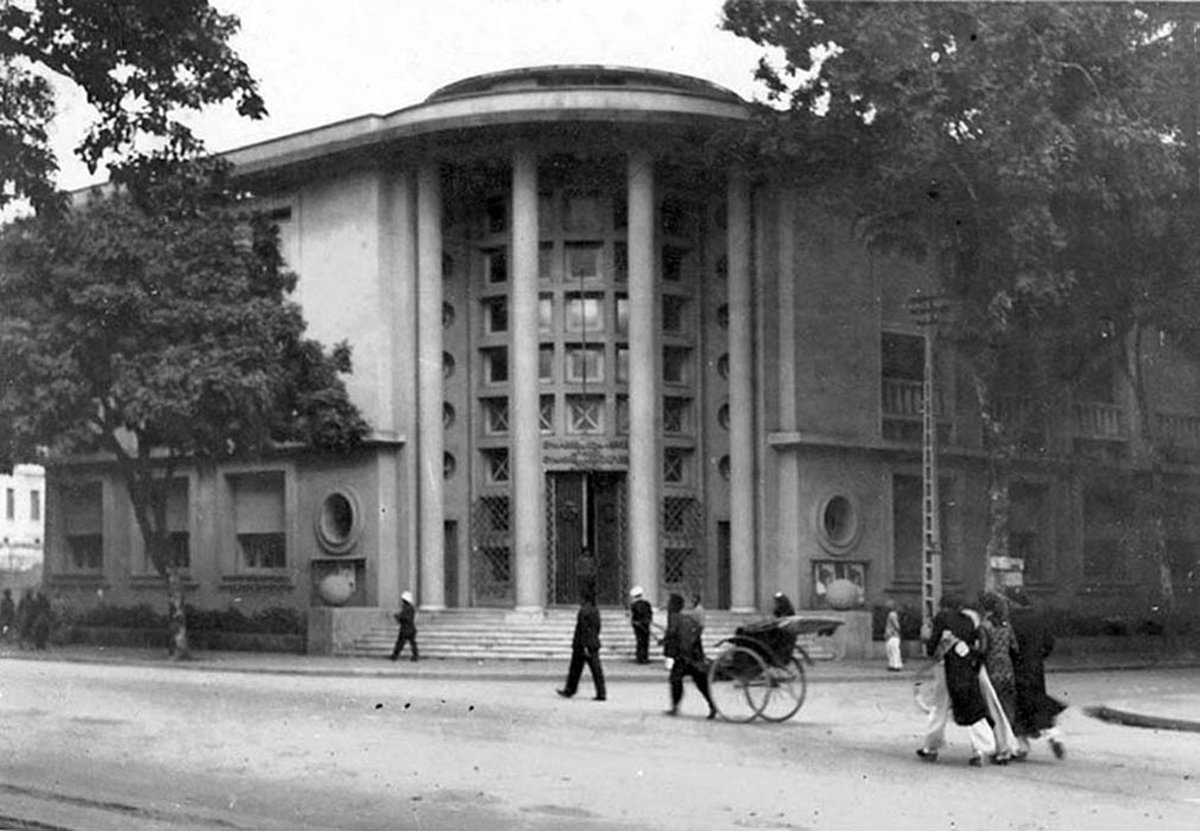
Hanoi Post Office Visiting Hours, Tickets, and Historical Sites Guide
Date: 14/06/2025
Introduction
The Hanoi Post Office (Bưu điện Hà Nội or Bo Ho Post Office) stands as one of the most iconic historical landmarks in Vietnam’s capital. Located in the heart of Hanoi’s Old Quarter and facing the picturesque Hoan Kiem Lake, this architectural gem weaves together threads of colonial history, wartime resilience, and continued public service. For travelers, the Hanoi Post Office offers more than a glimpse into the city’s past—it remains a living monument, connecting generations through its ongoing operations and cultural significance.
This guide provides all essential information for visitors, including opening hours, ticket details, accessibility, travel tips, architectural highlights, and suggestions for nearby attractions. Whether you are a history enthusiast, architecture admirer, or a first-time visitor, this comprehensive resource ensures a rewarding and insightful experience at one of Hanoi’s most celebrated historical sites.
For further historical context and visitor insights, see resources from La Siesta Hotels, Vietnam Tourism Official Site, and Nomads Travel Guide.
Table of Contents
- Introduction
- Historical Background
- Visitor Information
- Architectural Highlights
- Frequently Asked Questions (FAQ)
- Practical Tips for Tourists
- Weather & Etiquette
- Visuals and Media
- Nearby Attractions
- Conclusion & Visitor Summary
- References
Historical Background
Colonial Foundations
Established in 1883 during the French colonial era, the Hanoi Post Office was conceived to serve the growing communication needs of colonial administration (Britannica). French architect Henri Vildieu designed the main building, which was constructed between 1899 and 1901 after the demolition of the Bao An Pagoda. Its location—facing Hoan Kiem Lake—symbolized both colonial authority and the city’s evolving urban landscape (La Siesta Hotels).
Architectural Evolution & Urban Significance
The Hanoi Post Office complex is composed of three main buildings along Dinh Tien Hoang, Le Thach, and Dinh Le streets, each reflecting different architectural periods. The primary structure showcases neoclassical and Art Deco influences, with elegant facades, tall arched windows, and ornate moldings. A three-story extension was added in 1910 to accommodate increasing demand, and in 1902, the site was designated as Hanoi’s “zero milestone,” the point from which distances to other cities were measured (Nomads Travel Guide).
Wartime Resilience & National Symbolism
During the Indochina War, the post office became a strategic site and was fiercely defended during the fighting in December 1946. The building sustained damage but continued to function, symbolizing Vietnamese resilience. In January 1946, President Ho Chi Minh broadcasted pivotal calls for national resistance from the post office, cementing its role in the fight for independence (Nomads Travel Guide).
Post-war Reconstruction & Modernization
Following the war, the Hanoi Post Office was rebuilt and reopened in 1954 as the Hanoi Department of Post and Telecommunication. Significant renovations in the 1970s included a new clock tower (inaugurated in 1978), and a prominent rooftop signboard was installed in 1997. In 2015, the signboard was replaced with “VNPT Hanoi” for safety reasons, sparking ongoing discussions about heritage preservation (La Siesta Hotels).
Contemporary Preservation Efforts
Despite modernization and changes, the Hanoi Post Office remains a vibrant cultural landmark and operational postal center. Restoration efforts have balanced historic integrity with functional upgrades, ensuring the building’s continued relevance in Hanoi’s urban fabric (VietnamPlus).
Visitor Information
Location & Directions
- Address: 75 Dinh Tien Hoang Street, Hoan Kiem District, Hanoi, Vietnam (Note: some sources also refer to 94 Ma May Street; verify based on your tour or map) (Asia Odyssey Travel).
- Nearby: Hoan Kiem Lake, Old Quarter, St. Joseph’s Cathedral, Dong Xuan Market.
- Getting there: Easily reachable on foot from the Old Quarter. Taxis, buses, and ride-hailing services are also available.
Opening Hours
- Monday to Saturday: 8:00 AM – 6:00 PM
- Sunday: 8:00 AM – 12:00 PM
- Note: Hours may vary during public holidays such as Tet. Check ahead if visiting during major festivals (Trip.com).
Tickets & Admission
- Entry: Free. No tickets required.
- Postal services: Available for both local and international mail.
Accessibility
- Wheelchair access: Ramps at main entrance and wide corridors inside. However, surrounding sidewalks can be uneven—caution advised for those with mobility challenges.
- Restrooms: Available on-site and generally well-maintained.
Guided Tours & Events
- Guided tours: Not officially provided by the post office, but many local walking tours of the Old Quarter and French Quarter include the post office as a highlight (GuidetoHanoi.com).
- Events: Occasional cultural exhibitions and commemorations, especially on national holidays. Check local calendars for details.
Best Time to Visit
- Early morning or late afternoon for softer light and fewer crowds.
- Cooler months (October–April) offer the most pleasant weather for walking and sightseeing (Wanderlog).
Architectural Highlights
- Neoclassical French Colonial Design: Pale yellow façade, white trim, arched windows, and decorative moldings.
- Complex Layout: Three interconnected buildings, with the main structure facing Hoan Kiem Lake.
- Interior Features: High ceilings, original tiled floors, vintage wooden counters, and wrought-iron railings.
- Clock Tower: Iconic timekeeper and city landmark added during 1970s renovations.
- Art Deco Influences: Geometric forms and reinforced concrete in later additions (notably Dinh Le Street building).
- Functional Heritage: Still serves as a working post office, blending daily life with historical ambiance.
Frequently Asked Questions (FAQ)
Q: What are the Hanoi Post Office visiting hours?
A: Monday to Saturday: 8:00 AM – 6:00 PM; Sunday: 8:00 AM – 12:00 PM.
Q: Is there an entrance fee?
A: No, entry is free for all visitors.
Q: Are guided tours available?
A: Not officially, but many city walking tours include the post office as a stop.
Q: Is it accessible for people with disabilities?
A: Yes, ramps and wide corridors are provided, though care is needed on external pavements.
Q: Can I send mail internationally from here?
A: Yes, full postal services are available.
Q: Is photography allowed?
A: Yes, but please be respectful of staff and patrons.
Practical Tips for Tourists
- Currency: Vietnamese Dong (VND); carry small bills for transactions (The Boho Chica).
- Language: Some staff speak basic English, but having addresses in Vietnamese is helpful.
- Safety: Area is generally safe; be mindful of belongings.
- Dress Code: Modest attire is recommended.
- Souvenirs: Postcards, stamps, and Vietnamese memorabilia are available at the souvenir counter.
Weather & Etiquette
- Climate: Hanoi has hot, humid summers and cool, dry winters. The post office is air-conditioned.
- Etiquette: Be respectful of the building’s dual role as a historical site and working post office. Avoid loud conversations and do not obstruct service counters.
Visuals and Media
- Include high-quality images of the Hanoi Post Office’s façade, interior, and clock tower. Use alt tags such as “Hanoi Post Office visiting hours,” “Hanoi Post Office historical building,” and “Hanoi Post Office architecture.”
- Embed an interactive map showing the post office’s location and nearby attractions.
- Provide a link to a virtual tour if available on official or tourism websites.
Nearby Attractions
- Hoan Kiem Lake: Central lake with scenic walking paths and the Ngoc Son Temple.
- St. Joseph’s Cathedral: Neo-Gothic church within walking distance.
- Dong Xuan Market: Bustling traditional market.
- Imperial Citadel of Thang Long: UNESCO World Heritage site.
- Temple of Literature: Vietnam’s first university and a symbol of education.
Conclusion & Visitor Summary
The Hanoi Post Office is a remarkable testament to Hanoi’s layered history, blending colonial legacy, wartime resilience, and modern vibrancy in a single, accessible site. Free to enter and centrally located, it offers visitors the chance to explore a living landmark—admire its neoclassical and Art Deco design, participate in postal traditions, and experience the ambiance of a city in constant transformation.
For the best experience, visit during early mornings or late afternoons, and consider combining your visit with other nearby historical sites. Engaging in a guided walking tour can deepen your appreciation for the building’s place in Hanoi’s urban and cultural landscape.
Stay informed and connected by downloading the Audiala app for audio guides, and follow local tourism platforms for updates on events and travel tips.
References
- Britannica: History of Vietnam
- La Siesta Hotels: Hanoi Post Office - Three Centuries Flowing Through a Name
- Vietnam Tourism Official Site
- Nomads Travel Guide: Hanoi Post Office
- VietnamPlus: Hanoi Home to Ancient Heritage Sites
- Motogo Tours: Hanoi Post Office
- GuidetoHanoi.com: Hanoi Post Office
- Trip.com: Hanoi Post Office Guide
- Exotic Voyages: 10 Historical Landmarks of Hanoi
- Asia Odyssey Travel: Things to Do in Hanoi
- The Boho Chica: Vietnam Travel Tips
- Wanderlog: Hanoi Post Office
